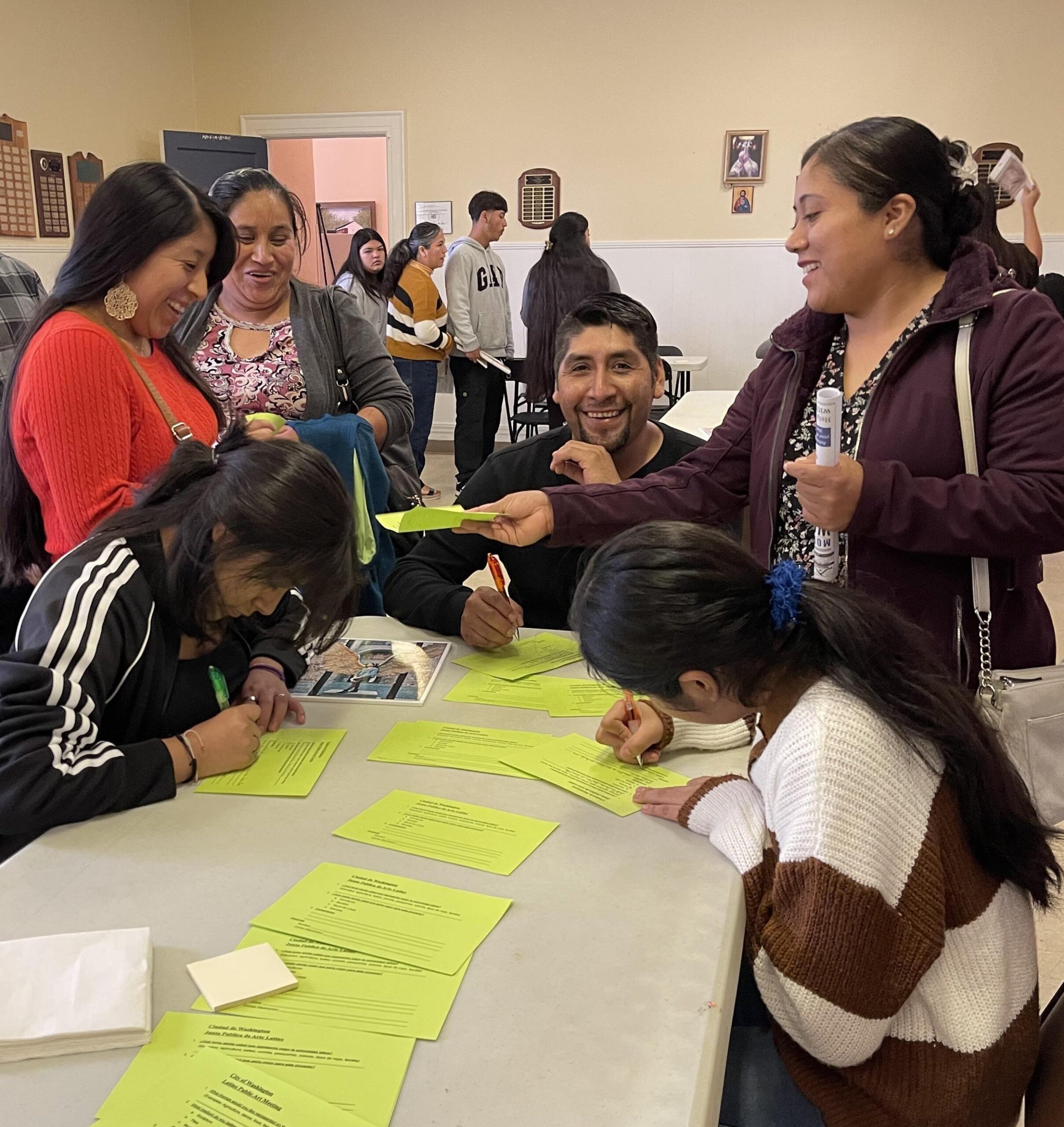City of Washington

City of Washington, in Washington, NC, received an Inclusive Public Art Initiative grant from ZSR.
Inspired by the Washington Building Integrated Communities partnership, a coalition of City of Washington staff—along with local volunteers, staff from the Underground Railroad Museum and Arts of the Pamlico—gathered with the aspiration to celebrate Washington’s Latin American heritage.
Early exploration uncovered stories of Afro-Caribbean migrants with Latin American ancestry who settled in the region in the mid-1800s through the early twentieth century, and the wave of migration of people from other parts of Latin America through the 1950’s. In the context of the South’s Black/White racial binary, census records list this population as Black and as such, historical records have erased much of this history; yet, oral history has persevered. However, once community engagement commenced in earnest and the coalition of partners was broadened, the desire emerged to focus on the beauty, culture and diversity that contemporary residents with Latin American roots bring to the region.
As stated in the 2021 Building Integrated Communities report, 70% of Beaufort County’s immigrant residents are from Latin American countries and approximately 13% of Washington’s residents have Latin American ancestry. The recent settlement of migrants from Latin America to Eastern North Carolina occurred in large part due to the 1986 Immigration Control and Reform Act (ICRA), through which employers often recruit Mexican and Central American workers via the H-2 visa program. Unlike the recipients of H-2A visas, who are primarily single men for agricultural labor, most of the seafood processing workers with H-2B visas are women. In Washington, these female crab pickers, or Jaiberas, have played a crucial role in supporting and expanding blue crab businesses and consequently have broadened Washington’s cultural diversity. Building on these stories, this project will celebrate the Latin American heritage of the City of Washington today.
Many of the coalition partners have worked together previously, and through community engagement efforts have forged new relationships with additional project partners including Iglesia La Roca and Mother of Mercy Catholic Church. These relationships will continue to steer engagement as the community provides input and shapes the design.
Selected for the project is artist Georges Le Chevallier who brings ample public art experience in addition to 25 years of bilingual teaching experience. Le Chevallier has a passion for community-based processes and creating site-specific works. He has also made a commitment to mentoring local emerging artists with Latin American roots. The result of this collaboration will be a 3,300-square-foot mural titled “Viva La Vida” (Long Live Life).